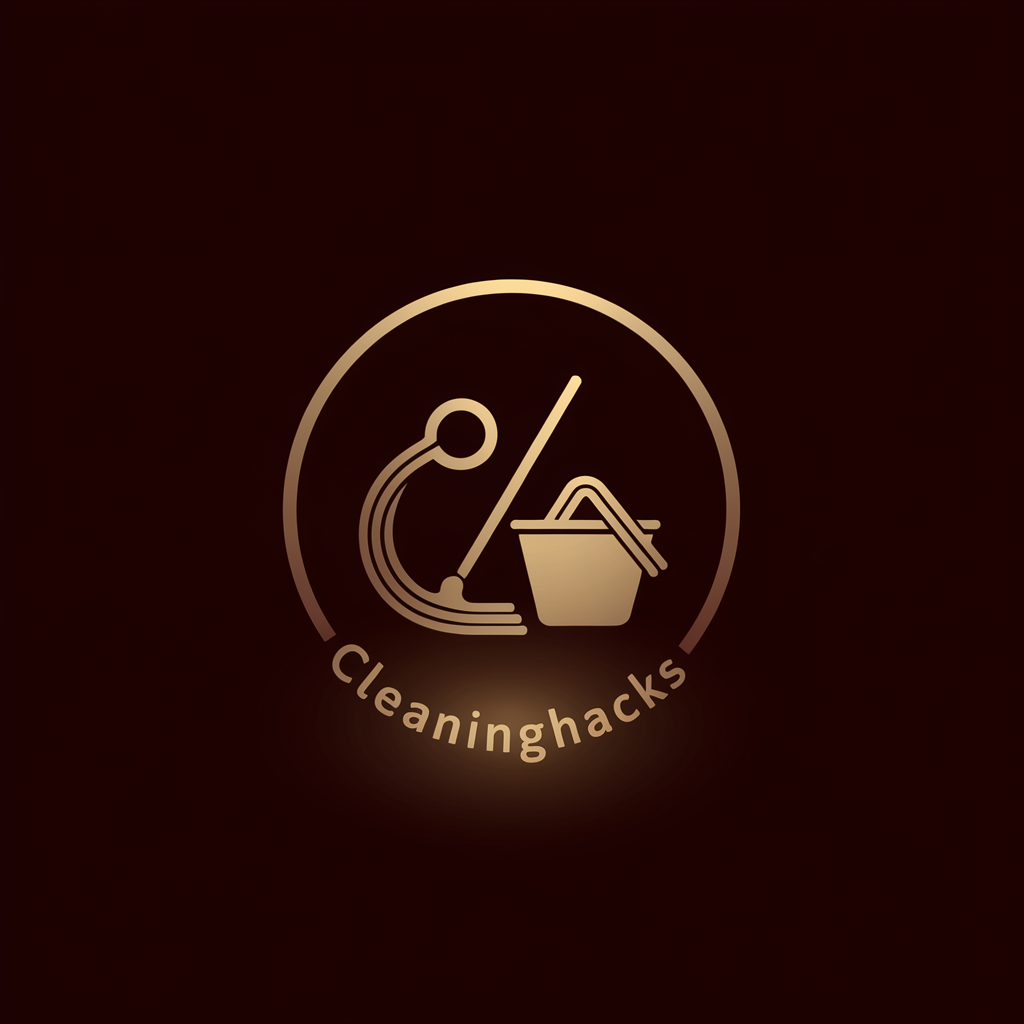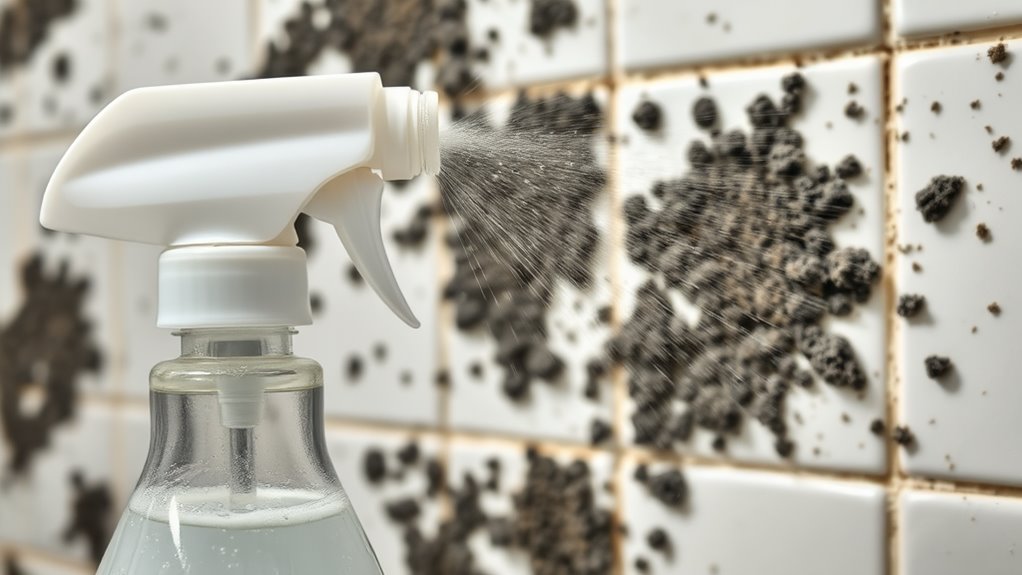The Vinegar Trick That Kills Mold Fast
Did you know that nearly 70% of homes have some form of mold growth, often lurking in damp corners? If you’re battling this pesky problem, the vinegar trick might be your fast, natural fix. It’s a simple method using everyday household items to tackle mold effectively in places like bathrooms or basements. Stick around to uncover how this affordable solution can transform your space into a mold-free zone.
Key Takeaways
- Vinegar kills mold fast with acetic acid that disrupts mold cell structure.
- Spray a vinegar-water mix directly on moldy surfaces for quick action.
- Scrub with a brush after applying vinegar to remove mold effectively.
- Use gloves and a mask for safety while handling vinegar solutions.
- Prevent regrowth by controlling humidity and fixing leaks promptly.
Understanding Mold Growth and Its Risks
Have you ever wondered why mold seems to creep into every damp corner of your home? It thrives in moist, warm environments, feeding on organic materials like wood or drywall.
You’ll often find it in bathrooms, basements, or near leaks, where humidity lingers.
Mold isn’t just unsightly; it poses health risks, triggering allergies or respiratory issues.
Don’t ignore those musty odors or black spots—tackle them fast.
While there are many solutions, the mold vinegar trick stands out as a simple, affordable fix.
Act quickly to stop mold from spreading and protect your space from further damage.
Vinegar is a powerful natural remedy for eliminating mold quickly from various surfaces.
Why Vinegar Works Against Mold
Why does vinegar stand out as a powerful weapon against mold? You’ll be amazed at its effectiveness, rooted in science.
Vinegar contains acetic acid, a potent compound that disrupts mold’s cell structure, breaking down its proteins and killing it at the source.
When you apply it, the acid penetrates the mold’s surface, stopping growth fast.
It’s also a natural, non-toxic option, so you’re not exposing yourself to harsh chemicals.
Plus, vinegar’s acidic pH creates an environment mold can’t thrive in.
With this simple household item, you’ve got a reliable, affordable way to tackle mold head-on.
This pantry staple is also praised for its natural mold remedy properties in maintaining a clean, mold-free space.
Gathering the Right Supplies
Before you start tackling mold with vinegar, make sure you’ve got the essential tools like a spray bottle, scrub brush, and a bucket for mixing solutions.
Don’t forget the safety gear needed, such as rubber gloves, a mask, and safety goggles to protect yourself from mold spores and vinegar fumes.
Gather these items ahead of time so you’re fully prepared for a safe and effective cleanup.
Using vinegar is a natural pantry staple method that can effectively combat mold issues in your home.
Essential Vinegar Tools
Equipping yourself with the right tools makes tackling mold with vinegar a breeze.
Grab a spray bottle to evenly apply the vinegar solution on affected areas.
You’ll also need a scrub brush with stiff bristles to loosen stubborn mold from surfaces like grout or tile.
Keep a microfiber cloth handy for wiping down smooth areas after treatment.
Don’t forget a small bucket to mix your vinegar with water if needed.
Lastly, have a measuring cup to ensure the correct vinegar-to-water ratio.
With these essentials, you’re set to attack mold effectively and restore your space.
Safety Gear Needed
Now that you’ve got your tools ready, let’s focus on the safety gear you’ll need to protect yourself while battling mold with vinegar.
Grab a pair of rubber gloves to shield your hands from harsh vinegar and mold spores. Wear safety goggles to keep your eyes safe from irritation or accidental splashes. Don a dust mask or respirator to avoid inhaling mold particles, especially in confined spaces. Lastly, slip on old clothes or a protective apron to prevent stains or skin contact.
With this gear, you’re set to tackle mold safely and effectively.
Preparing the Vinegar Solution
Grab a clean spray bottle to start preparing your vinegar solution for tackling mold.
Fill it halfway with undiluted white vinegar, which is a powerful natural cleaner with acetic acid to break down mold. Add about 10 drops of tea tree essential oil if you’ve got it; it’s a potent antifungal booster.
Top off the bottle with water, leaving a little space at the top for shaking. Secure the lid tightly and shake well to mix everything.
You’ve now got a ready-to-use solution that’s effective and safe for most surfaces in your home.
This spray can help prevent mold growth in bathrooms and other damp areas of your house.
Applying the Solution to Affected Areas
Now that you’ve got your vinegar solution ready, grab a spray bottle or a cloth and target those moldy spots directly on surfaces like walls or tiles.
Make sure you’re wearing protective gear, such as gloves and a mask, to shield yourself from mold spores and vinegar fumes during application.
Focus on saturating the affected areas thoroughly to ensure the solution penetrates and starts breaking down the mold effectively.
This simple hack can help you achieve a cleaner bathroom space without the need for harsh chemicals.
Target Moldy Spots
Precision is key when targeting moldy spots in your home.
Grab a spray bottle filled with undiluted white vinegar and focus on the affected areas.
Spray directly onto visible mold, ensuring you cover every inch of the patch.
Don’t oversaturate; a light, even mist works best to penetrate the surface.
For stubborn spots, use a small brush to agitate the vinegar into the mold after spraying.
Let it sit for at least an hour to break down the spores.
Check corners, grout lines, and damp areas where mold hides—be thorough to prevent regrowth.
Use Protective Gear
Equip yourself with protective gear before applying vinegar to moldy areas to ensure your safety.
Mold spores can harm your lungs, and vinegar fumes might irritate your skin or eyes.
Grab a pair of rubber gloves to shield your hands from direct contact. Wear safety goggles to protect your eyes from splashes. Don a mask, preferably an N95, to avoid inhaling spores or vapors.
Make sure you’re in a well-ventilated space, opening windows or using a fan.
These precautions keep you safe while you tackle mold, letting you focus on cleaning without risking your health during the process.
Scrubbing and Cleaning Techniques
Dive into the process of scrubbing mold away with vinegar by starting with a sturdy scrub brush or an old toothbrush for those hard-to-reach spots.
Dip the brush into a solution of equal parts vinegar and water, ensuring it’s soaked.
Scrub the moldy area vigorously in circular motions to loosen the spores.
For stubborn patches, apply undiluted vinegar directly and let it sit for 10 minutes before scrubbing again.
Rinse the brush often to avoid spreading mold.
Wipe the surface with a damp cloth afterward to remove residue, ensuring a clean, mold-free finish with minimal effort.
To prevent future growth, ensure proper ventilation by using an exhaust fan or opening a window after showers to reduce bathroom moisture levels.
Preventing Future Mold Buildup
How can you keep mold from creeping back after cleaning it with vinegar? First, control humidity in your home by using dehumidifiers or exhaust fans in damp areas like bathrooms and kitchens. Keep these spaces below 50% humidity to discourage mold growth.
Next, fix leaks promptly—don’t let water seep into walls or floors.
Ensure proper ventilation by opening windows or running fans to circulate air.
Regularly inspect hidden spots like under sinks for moisture buildup.
Finally, clean surfaces often, especially in high-moisture zones, to stop mold spores before they settle and spread again.
Adopt a daily habit of wiping down wet surfaces after each use to maintain a dry environment and prevent mold growth.
Safety Tips When Using Vinegar
While vinegar is a natural and effective mold killer, you’ve got to handle it with care to stay safe. Always wear gloves and a mask when cleaning mold; vinegar’s acidity can irritate skin, and mold spores may harm your lungs. Work in a well-ventilated area to avoid inhaling fumes. Don’t mix vinegar with bleach or other cleaners—dangerous gases can form. Check this safety checklist before starting:
| Safety Measure | Why It’s Important |
|---|---|
| Wear gloves | Protects skin from irritation |
| Use a mask | Prevents inhaling mold spores |
| Ventilate area | Reduces fume inhalation risk |
| Avoid mixing chemicals | Prevents toxic gas formation |
| Keep vinegar diluted | Minimizes skin/eye irritation |
Additionally, consider using vinegar as part of a broader strategy for maintaining a hygienic bathroom environment.

